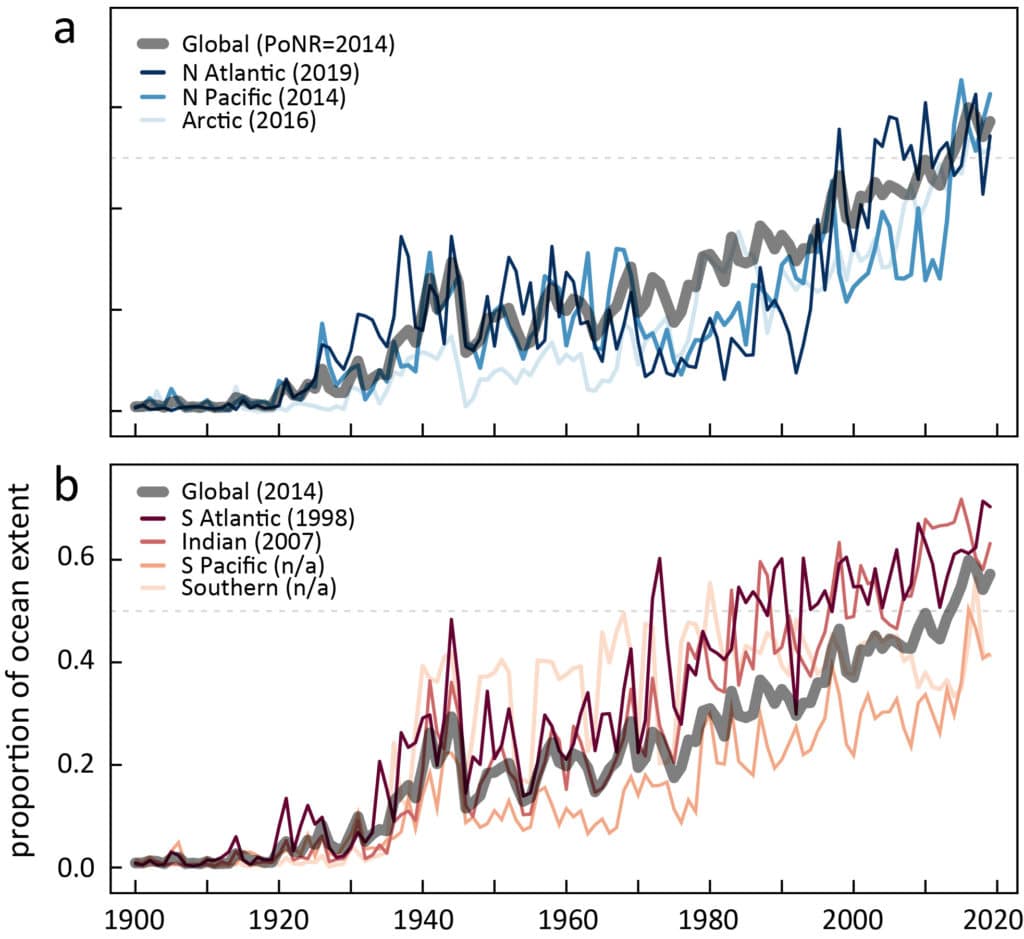Climate change exposes marine ecosystems to extreme conditions with increasing frequency. More than half of the ocean has experienced extreme heat for the last seven years.
A new study by the Monterey Bay Aquarium reveals that excessively warm ocean temperatures driven by climate change are the new normal. This increases the risk of collapse for crucial marine ecosystems.
For the study, scientists mapped 150 years of sea surface temperatures. They wanted to determine a fixed historical benchmark for marine heat extremes. Scientists then observed how often and how much the ocean surpassed this point. They found:
- The year 2014 was the first, in which more than half of the ocean experienced heat extremes.
- A similar trend was observed in subsequent years.
- In 2019, 57 percent of the ocean experienced heat extreme.
Using this benchmark, scientists confirmed- just two percent of the ocean surface was experiencing extremely warm temperatures at the end of the 19th century.
Dr. Kyle Van Houtan, who headed the research team during his tenure as chief scientist for the aquarium, said, “Climate change is not a future event. The reality is that it’s been affecting us for a while. These dramatic changes we’ve recorded in the ocean are yet another piece of evidence that should be a wake-up call to act on climate change. We are experiencing it now, and it is speeding up.”
The review developed from a discrete examination into the historical backdrop of kelp forest changes throughout California. Scientists then discovered that sea surface heat extremes, critical stressors for canopy kelps, needed to be quantified and mapped along the California coast throughout the last century.
Scientists then expanded the investigation beyond California to understand better the long-term frequency and location of extreme marine heat across the global ocean surface.
For this, scientists analyzed historical records to determine the average temperatures for the ocean’s surface spanning 1870 to 1919. They then identified the most dramatic ocean warming that occurred during that period.

Van Houtan said, “Today, the majority of the ocean’s surface has warmed to temperatures that only a century ago occurred as rare, once-in-50-year extreme warming events.”
Scientists noted, “The new normal of extreme heat across the majority of the ocean’s surface is further evidence for the urgent need to drastically reduce emissions from the burning of fossil fuels, which are the driver of climate change.”
Van Houtan said, “When marine ecosystems near the tropics experience intolerably high temperatures, key organisms such as corals, seagrass meadows, or kelp forests can collapse. Altering ecosystem structure and function threatens their capacity to provide life-sustaining services to human communities like supporting healthy and sustainable fisheries, buffering low-lying coastal regions from extreme weather events, and serving as a carbon sink to store the excess carbon put in the atmosphere from human-generated greenhouse emissions.”
Journal Reference:
- Kisei R. Tanaka et al. The recent normalization of historical marine heat extremes. DOI: 10.1371/journal.pclm.0000007
